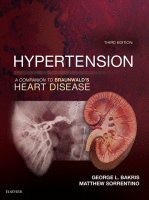Physical Address
304 North Cardinal St.
Dorchester Center, MA 02124

Background The term “guideline” needs to be defined before any meaningful discussion can occur about their need and more importantly, interpretation. “Guideline” was originally defined as “a cord or rope to aid a passer over a difficult point or to…

United States of America Hypertension Guidelines (Portion) Background Story The groundwork for the first United States hypertension guideline began with the first randomized trial of hypertension treatment in U.S. veterans, which was directed by Dr. Ed Freis, a Veterans Administration…

Disclaimer: The findings and conclusions in this document are those of the author and do not necessarily represent the official position of the Centers for Disease Control and Prevention. “Drugs don’t work in patients who don’t take them.” —C. Everett…

Although blood pressure (BP) control has improved substantially in the last five decades, only half of the United States population with hypertension have adequate BP control. In contrast, BP control in some high-performing health systems is much better and can…

Acknowledgments The authors would like to thank members of the Blood Pressure Lowering Treatment Trialists’ Collaboration: L. Agodoa (National Institute of Diabetes and Digestive and Kidney Diseases, National Institutes of Health, Bethesda, Maryland); C. Anderson, J. Chalmers, S. MacMahon, A.…

Acknowledgments The author thanks Shakaib U. Rehman, MD, the late Donald G. Vidt, MD, and Jan N. Basile, MD, for their contributions to previous editions of this chapter. High blood pressure (BP), or hypertension, remains a major worldwide public health…

Aortic and peripheral arterial diseases may coexist in patients with hypertension. Although aortopathies and peripheral arterial disease can be seen in isolation, more often than not they present in patients with multiple cardiovascular risk factors, hypertension being chief among them.…

There are few contemporary studies concerning the cardiovascular (CV) risks caused by hypertension or the benefits of its treatment during the perioperative period. Conversely, numerous trials have evaluated the potential benefits of specific antihypertensive medications, in particular beta-blockers. The 2007…

Hypertension is the most common chronic disease in developed countries, with a prevalence of approximately 25% to 30% in adults. High blood pressure (BP) remains one of the leading risk factors influencing cardiovascular morbidity and mortality. The current management of…

Orthostatic hypotension (OH) is a significant medical problem; it occurs in about 6% of healthy elderly in the community, 18% to 54% of nursing home residents, and up to 60% in hospitalized elderly. The incidence of OH increases exponentially after…